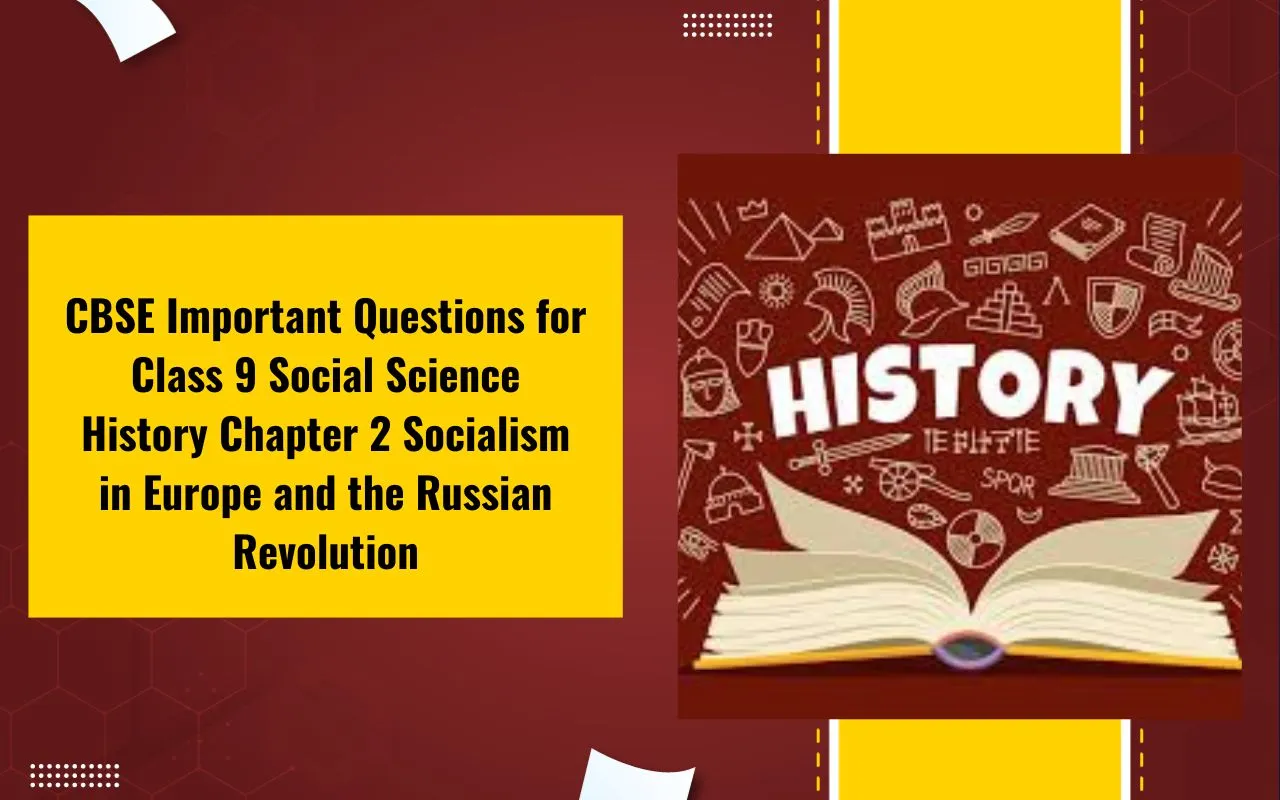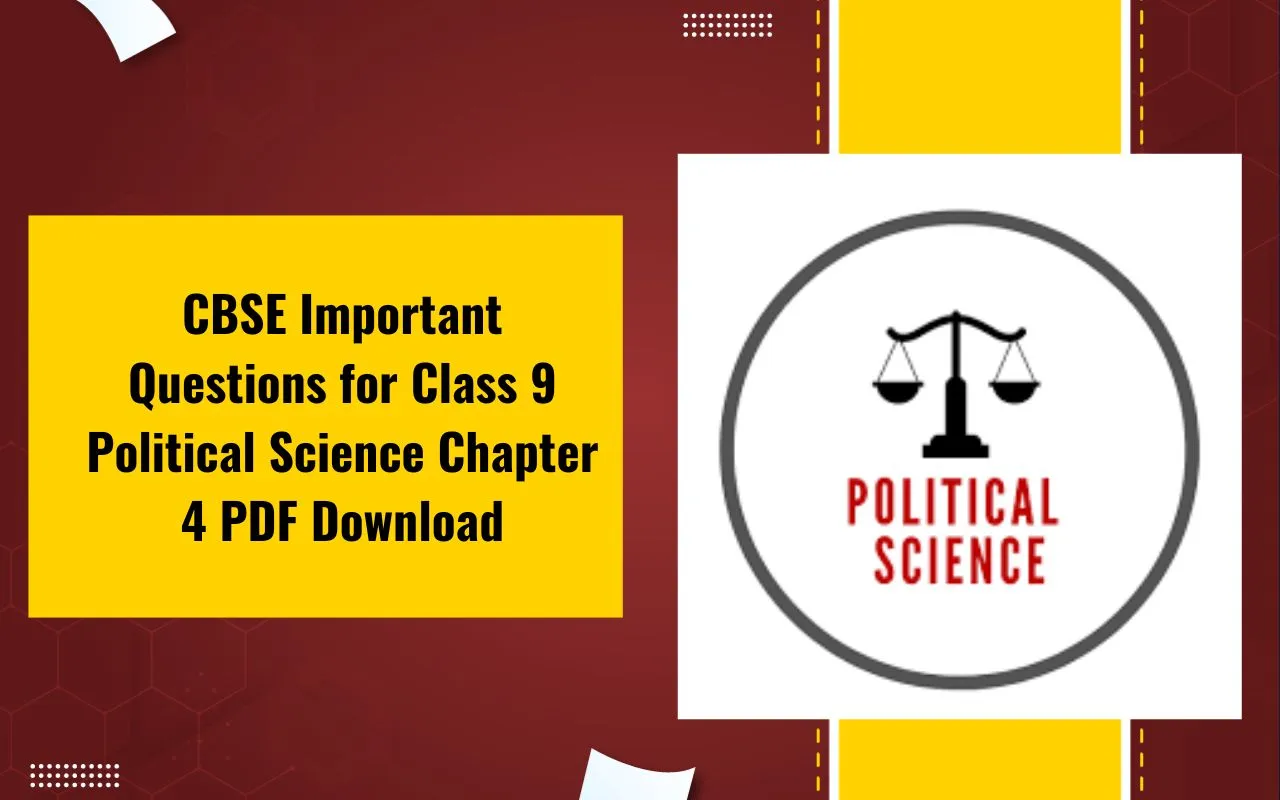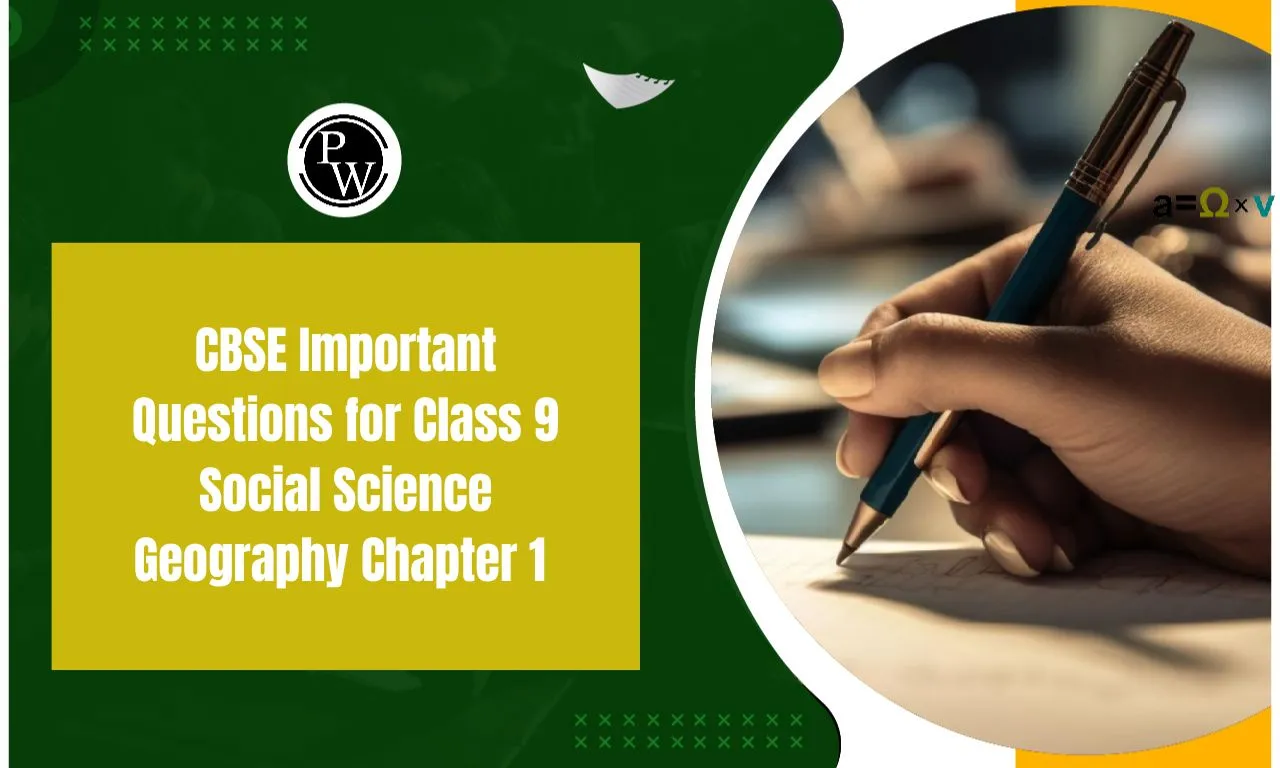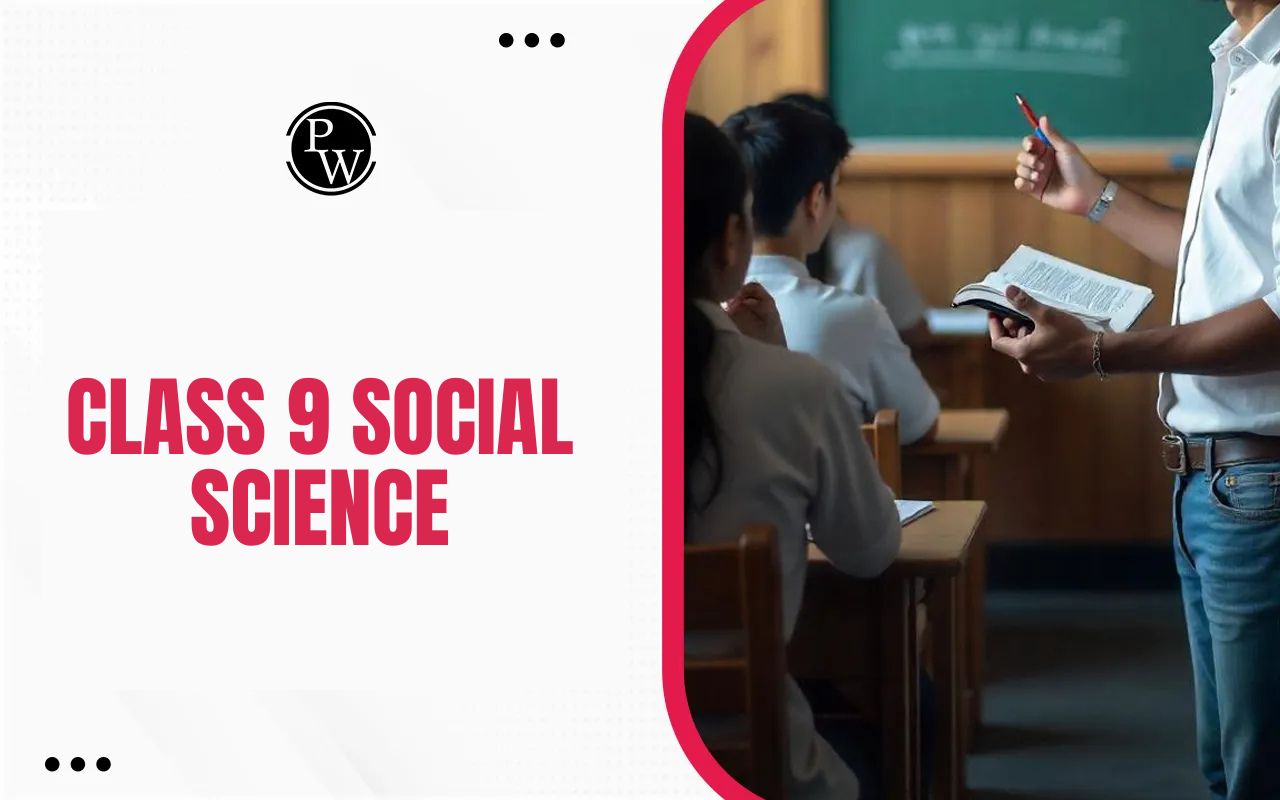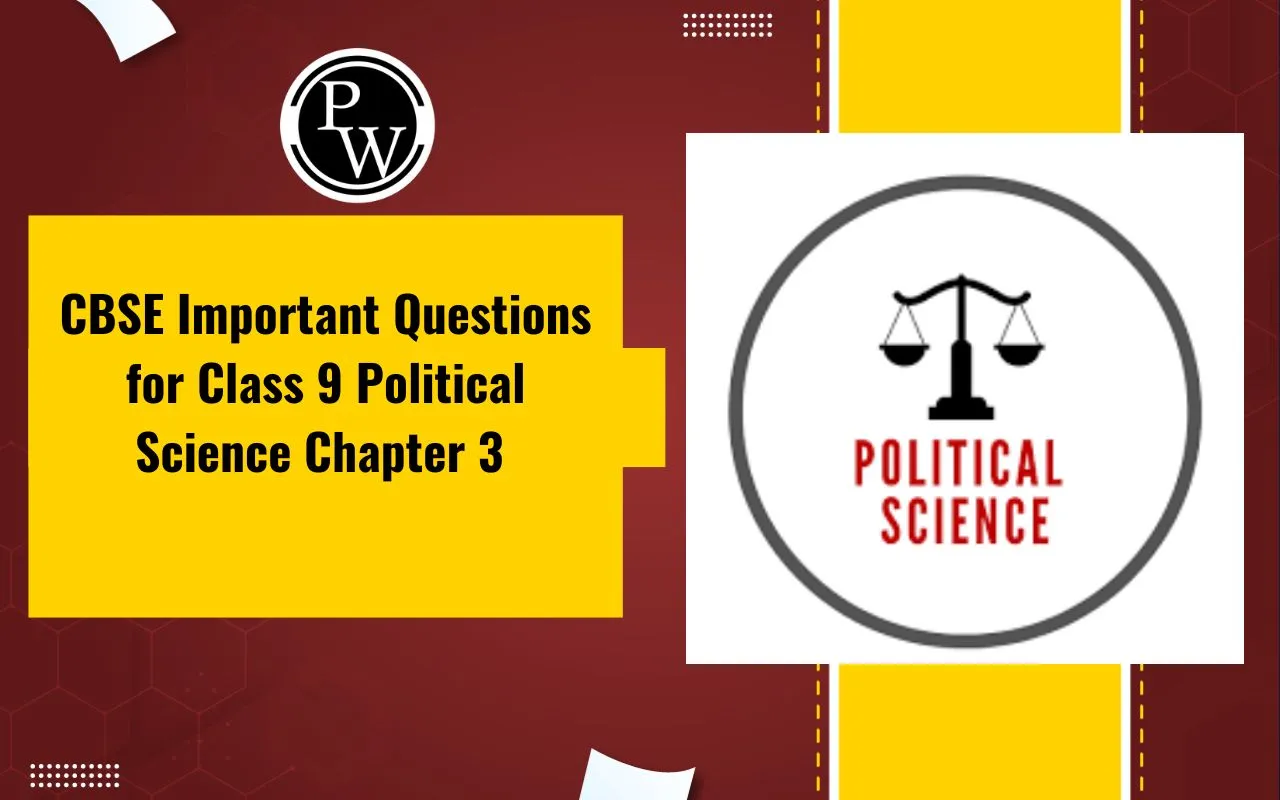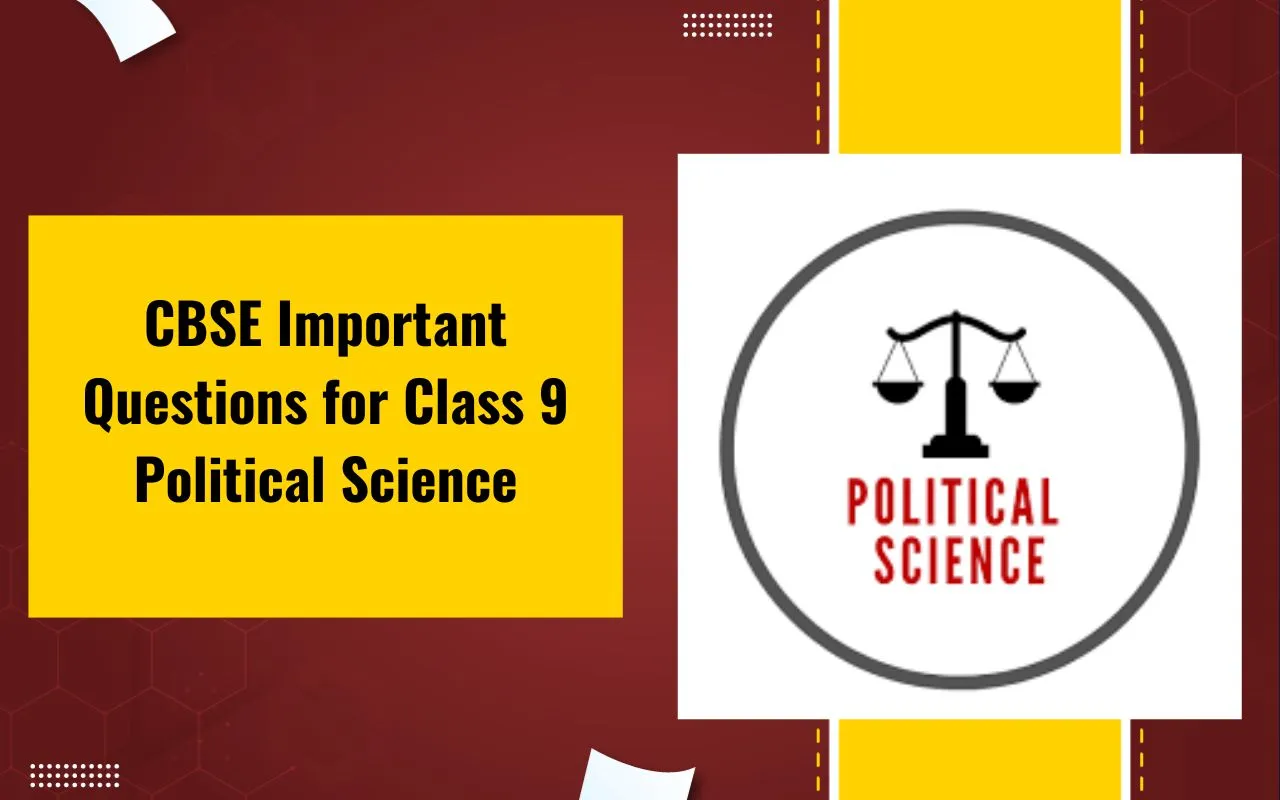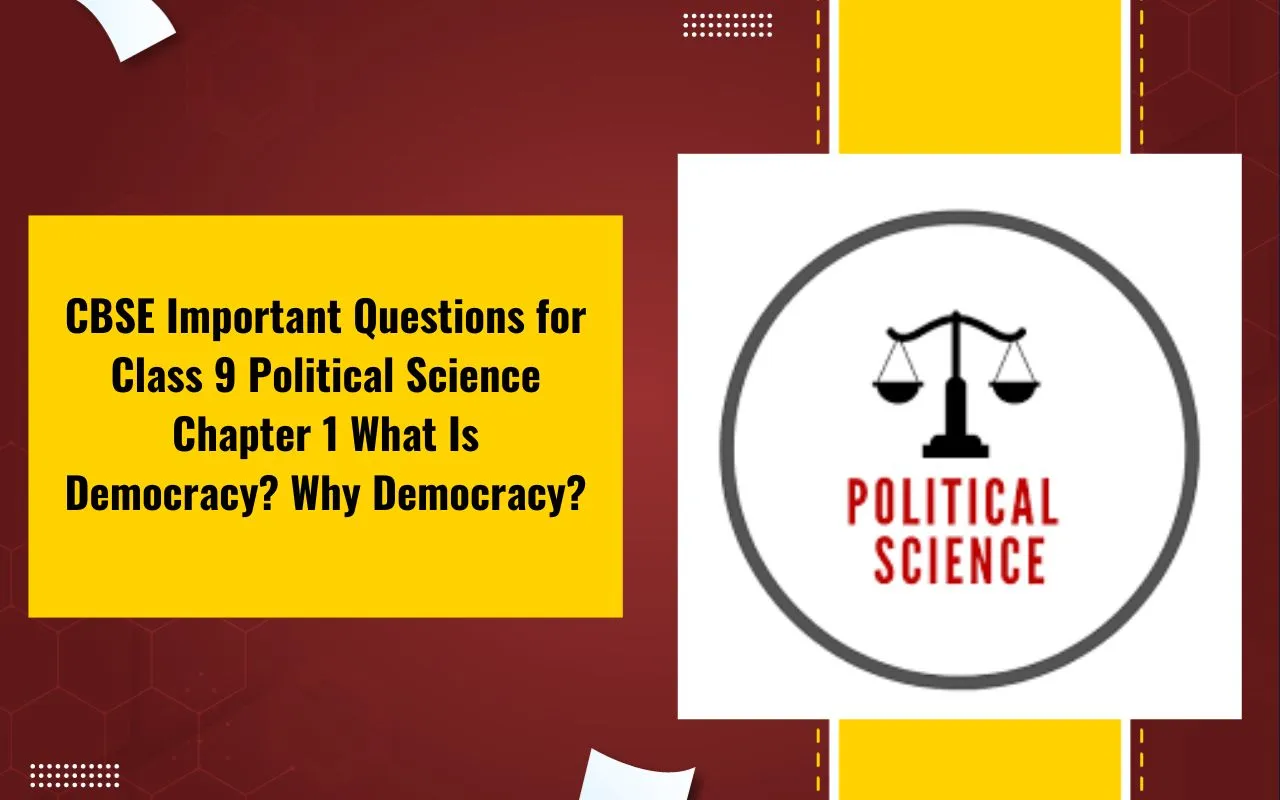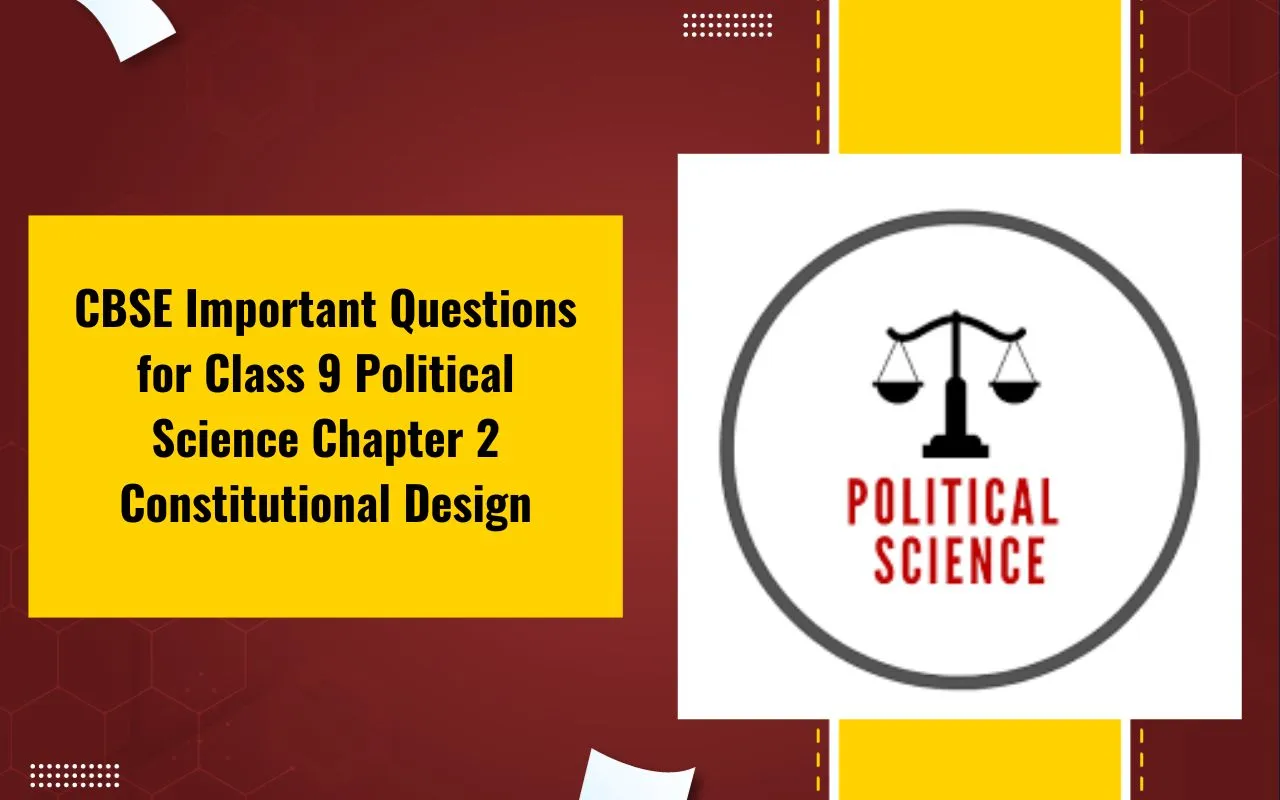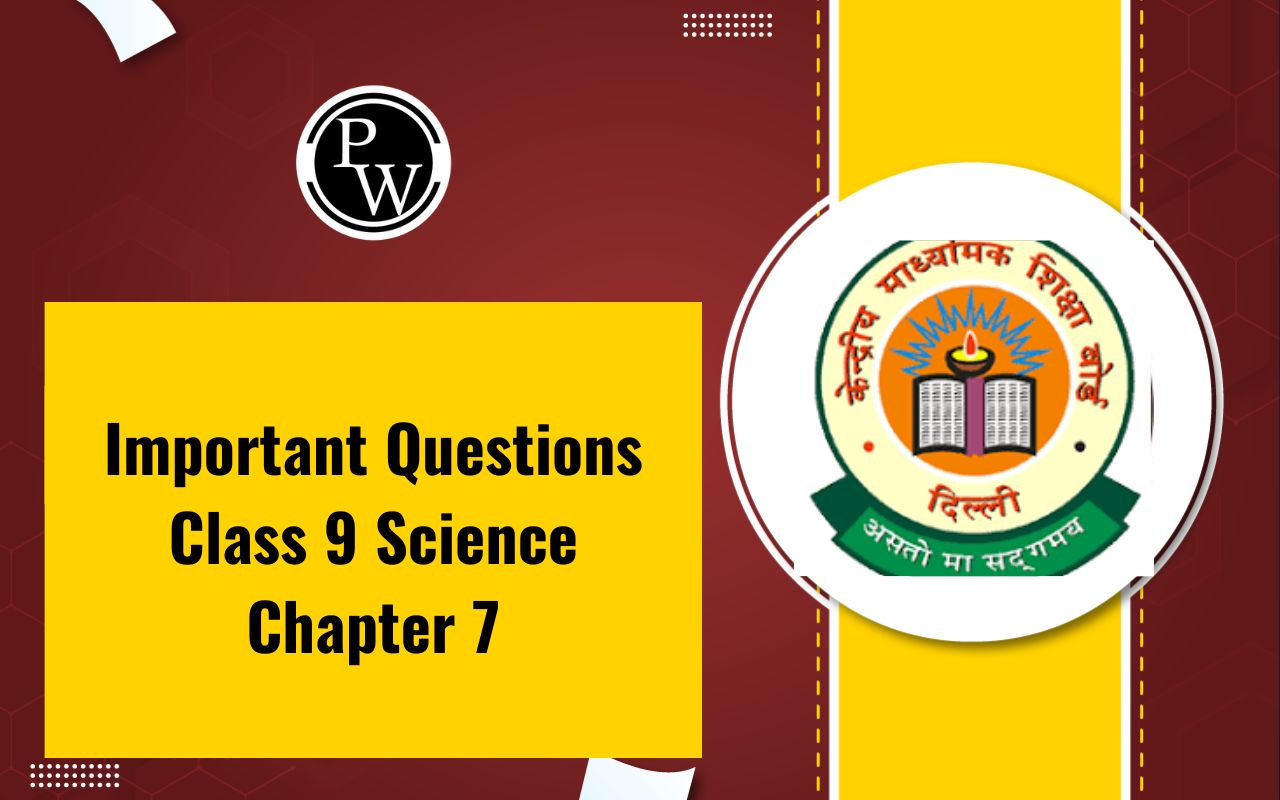
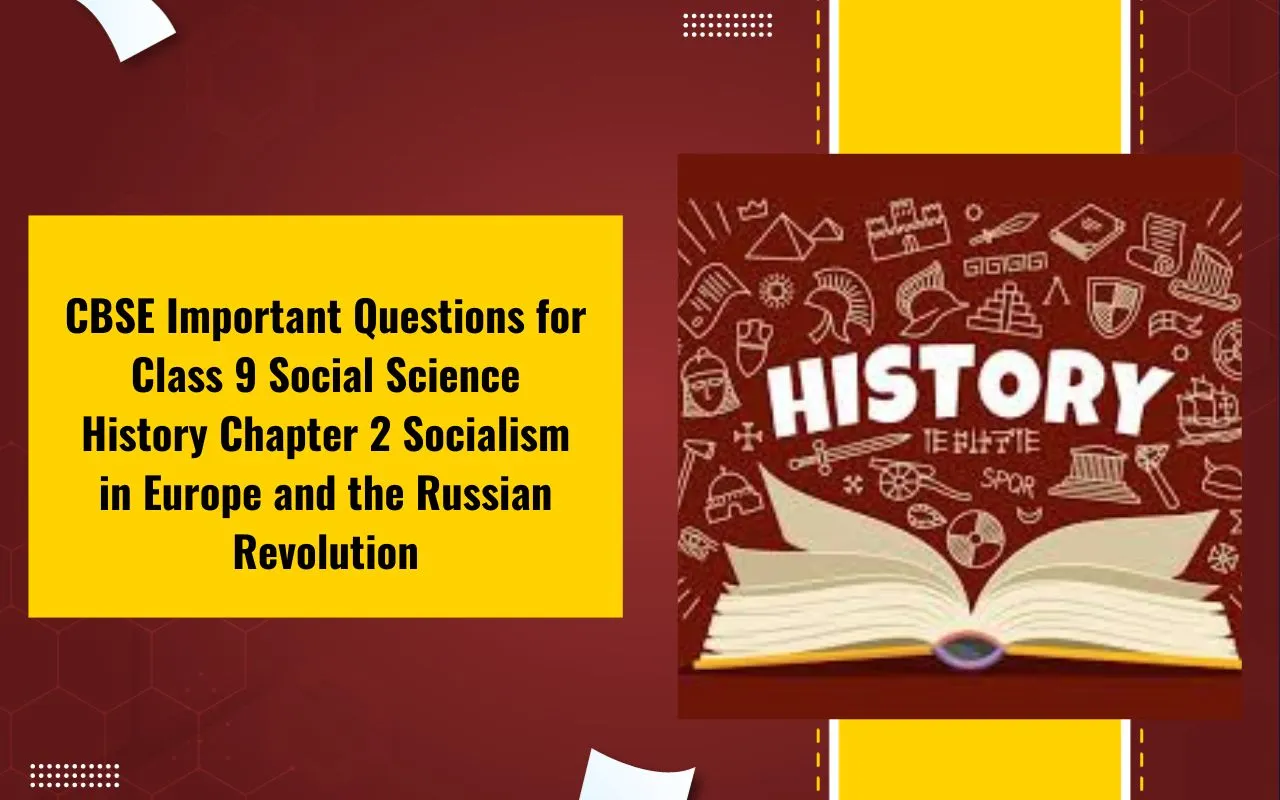
CBSE Important Questions for Class 9 Social Science History Chapter 2 Socialism in Europe and the Russian Revolution: CBSE Important Questions for Class 9 Social Science History Chapter 2, Socialism in Europe and the Russian Revolution, focuses on the rise of socialist movements and the significant events of the Russian Revolution. In this chapter, students explore the socio-political conditions in Europe leading up to the emergence of socialism, the ideas of key thinkers like Karl Marx and Friedrich Engels, and the impact of their ideologies on the working class.
Understanding these events helps students analyze the shift from autocracy to a socialist government in Russia, shaping the global political landscape of the 20th century. The important questions in this chapter aim to clarify the key concepts and historical events, providing students with a strong foundation for both understanding and analyzing revolutionary ideologies.
CBSE Important Questions for Class 9 Social Science History Chapter 2 Overview
CBSE Important Questions for Class 9 Social Science History Chapter 2: Socialism in Europe and the Russian Revolution focus on key historical events and ideas that shaped the socio-political landscape in Europe and Russia. This chapter covers the rise of socialism, the impact of industrialization on the working class, and the revolutionary movements that led to the Russian Revolution of 1917.
Overview:
-
Socialism in Europe: This section introduces the idea of socialism and its development in Europe. It explores how thinkers like Karl Marx and Friedrich Engels promoted the idea that the working class (proletariat) should overthrow the capitalist system. The chapter discusses the emergence of various socialist movements and the formation of political parties that aimed to represent the interests of workers.
-
Industrial Revolution and its Impact: The Industrial Revolution led to significant changes in European society, especially the growth of factories, urbanization, and the rise of a working class that faced harsh conditions. The chapter explains how these conditions inspired the development of socialist ideas as a response to the exploitation of workers by factory owners and the bourgeoisie.
-
The Russian Revolution of 1917: The chapter then shifts focus to Russia, where the discontent with the autocratic rule of Tsar Nicholas II and the social inequalities led to the 1917 revolution. It discusses the role of key figures like Vladimir Lenin, the Bolshevik Party, and the events that led to the overthrow of the Tsarist regime and the establishment of a socialist government in Russia.
-
The Rise of Bolshevism: The Bolshevik Revolution in October 1917 was a turning point in world history. This section explains how Lenin and his followers led the revolution, the establishment of a one-party state, and the changes brought about by the Bolshevik rule, including land redistribution and the withdrawal from World War I.
CBSE Important Questions for Class 9 Social Science History Chapter 2 PDF
The chapter on Socialism in Europe and the Russian Revolution deals with the rise of socialist ideologies, the industrial revolution’s impact on society, and the historical events leading to the Russian Revolution of 1917. The PDF available below provides a comprehensive set of important questions that cover all essential topics, including the rise of socialism in Europe, the role of key thinkers like Karl Marx, the conditions leading to the Russian Revolution, and the Bolshevik Revolution led by Lenin. These questions are designed to help students grasp key historical concepts, improve their analytical skills, and prepare effectively for exams.
You can download the PDF below for a detailed list of important questions and practice material that will aid in understanding the significant events and ideas discussed in this chapter.
Download PDF CBSE Important Questions for Class 9 History Chapter 2
CBSE Important Questions for Class 9 Social Science History Chapter 2 Socialism in Europe and the Russian Revolution
Here are the important questions for Chapter 2 Socialism in Europe and the Russian Revolution:
Section –A [1 Mark]
1. Alexandra was of _________.
(A) German Origin
(B) French Origin
(C) Dutch Origin
(D) Russian Origin
Ans: (A) German Origin
2. In the context of Russia, Duma refers to which of the following:
(A) A judicial body
(B) An executive body
(C) An elected Consultative Parliament
(D) An army establishment
Ans: (C) An elected Consultative Parliament
3. Jaddists were _____ within the Russian Empire?
(A) Muslim Reformers
(B) Muslim educationists
(C) Parsi Reformers
(D) German refugees
Ans: (A) Muslim Reformers
4. Which of the following groups of countries formed the Central Power during the First World War?
(A) England, Germany, Italy
(B) Austria, Germany, Turkey
(C) Turkey, Germany, France
(D) France, England, Russia
Ans: (B) Austria, Germany, Turkey
5. Which group was against any political or social change?
(A) Nationalists
(B) Conservatives
(C) Liberals
(D) Radicals
Ans: (B) Conservatives
7. Who were the radicals?
Ans: Radicals were the ones who wanted a nation in which government was based on the majority of a country’s population. They opposed the privileges of great landowners and wealthy factory owners.
8. Name two famous socialists who introduced a communist system.
Ans: Karl Marx and Friedrich Engels.
10. Name any two Indians who talked of the significance of the French Revolution.
Ans: Raja Rammohan Roy and Derozio.
11. Who were the people who wanted to put an immediate end to the existing governments in Europe in 1815?
Ans: Some nationalists, liberals, and radicals who became revolutionaries wanted to put an immediate end to the existing governments in Europe in 1815.
12. What is Comintern?
Ans: It was an international union of pro-Bolshevik socialist parties.
Section –B [2 Marks]
13. Why did a lockout take place at a factory on the right bank of the River Neva on 22 February 1917?
Ans. A lockout took place at a factory on the right bank of the River Neva on 22nd February 1917 in favor of the workers on the left bank of the river. They had a bad time due to severe winter and food shortages.
14. To whom did the ‘reds’, ‘greens’, and ‘whites’ refer to during the Civil War in Russia?
Ans. The ‘reds’ were the Bolsheviks.
The ‘greens’ were the Socialist Revolutionaries.
The ‘whites’ were the pro-Tsarists.
15. What were the demands referred to in Lenin’s ‘April Theses’?
Ans. The following were the demands referred to in Lenin’s April Theses:
(a) World War I should be brought to an end.
(b) Land should be transferred to the peasants.
(c) Banks should be nationalized.
16. Write a short note on Mensheviks.
Ans.
(i) Alexander Kerensky was the leader of the party.
(ii) This party was liberal and open to all.
(iii) They wanted to transform society through education and reforms among the workers.
17. In what ways was the working population in Russia different from other countries in Europe, before 1917?
Ans.
(i) Workers were divided into social groups.
(ii) They were divided by skill.
(iii) They had strong ties with villages.
Section –C [3 Marks]
18. How did Social Democrats disagree with Socialist-Revolutionaries?
Ans. Social Democrats disagreed with Socialist Revolutionaries in the following ways:
(a) Social Democrats believed workers to be the main force of revolution, whereas Socialist Revolutionaries argued that peasants would be the revolutionary class.
(b) Social Democrats wanted benefits for the workers and control of the factors of production, whereas Socialist Revolutionaries demanded land from the peasants.
(c) Social Democrats felt that peasants were not a united group as they were rich and poor, and many owned large tracts of land. Socialist Revolutionaries favored peasants as natural socialists.
19. What was the basic principle of the Marxist theory?
Ans. Marx believed that the condition of workers could not improve as long as private capitalists had a profit motive. Workers had to overthrow capitalism and the rule of private property. Workers must construct a radically socialist society where all property is socially controlled. This would be a communist society, the natural society of the future.
20. What made the Tsar the ‘autocrat of all the Russians’? Describe the steps he took just before the Russian Revolution.
Ans. Russia followed autocracy. The Tsar was not subject to Parliament. This made the Tsar the autocrat of all Russia. The liberals in Russia campaigned to end this state of affairs. The following steps were taken by the Tsar just before the Russian Revolution to ascertain his authority.
Section–D [5 Marks]
21. Explain any five differences between the peasants of Russia and peasants of Europe.
Solution:
|
Peasants of Europe |
Peasants of Russia |
|
(i) They formed unions and fought for better wages and good living conditions. |
They had no proper unions and associations initially. It came up much later. |
|
(ii) The workers were united in their demands for political rights and reduction in work hours. |
The workers were not united. They were divided on the basis of occupation. |
|
(iii) The workers' associations had close ties with the political parties and themselves formed political parties. For example, the Labour Party in Britain. |
The workers' associations were considered as illegal and were suppressed. |
|
(iv) In France, during the French Revolution in Brittany, peasants had respect for nobles and fought for them. |
The workers' associations were considered as illegal and were suppressed. |
|
(v) The peasants in Europe had political rights and enjoyed them. |
The peasants did not enjoy any political rights. |
22. Explain the consequences of the February Revolution of 1917 in Russia.
Solution:
The consequences of the February Revolution of 1917 in Russia are as follows:
(i) Tsar abdicated on 2 March.
(ii) Soviet leaders and Duma leaders formed a provisional government to run the country.
(iii) It was agreed that Russia’s future would be decided by a constituent assembly, elected based on universal adult suffrage.
(iv) The provisional government removed restrictions on public meetings and associations.
(v) Soviets, like the Petrograd Soviet, were set up everywhere, though no common system of election was followed.
23. What changes did industrialization bring to the society in Russia?
Solution:
The following changes were brought to Russian society with the advent of industrialization:
-
a. The society saw profound social and economic changes.
-
b. It was a time when new cities came up, new industrialized regions developed, and railways expanded.
-
c. Industrial Revolution brought men, women, and children to factories.
-
d. Work hours were often long and wages were very low.
-
e. During the time of low demand, unemployment was common.
-
f. As the towns were growing rapidly, problems like housing and sanitation emerged.
Section–E [4 Marks]
24. Case-based Questions:
Read the following source carefully and answer the questions that follow:
On Sunday, 25th February, the government suspended the Duma. Politicians spoke out against the measure. Demonstrators returned in force to the streets of the left bank on the 26th. On the 27th, the Police Headquarters were ransacked. The streets thronged with people raising slogans about bread, wages, better hours, and democracy. The government tried to control the situation and called out the cavalry once again. However, the cavalry refused to fire on the demonstrators.
An officer was shot at the barracks of a regiment and three other regiments mutinied, voting to join the striking workers. By that evening, soldiers and striking workers had gathered to form a ‘soviet’ or ‘council’ in the same building as the Duma met. This was the Petrograd Soviet. The very next day, a delegation went to see the Tsar. Military commanders advised him to abdicate. He followed their advice and abdicated on 2 March. Soviet leaders and Duma leaders formed a Provisional Government to run the country. Russia’s future would be decided by a constituent assembly, elected based on universal adult suffrage. Petrograd had led the February Revolution that brought down the monarchy in February 1917.
Answer the following MCQs by choosing the most appropriate option:
(i) When did the government suspend the Duma?
(A) 26th February
(B) 25th February
(C) 28th February
(D) 27th February
Solution: (B) 25th February
(ii) The Police Headquarters were ransacked on:
(A) 27th
(B) 25th
(C) 24th
(D) 28th
Solution: (A) 27th
(iii) The Tsar was advised by:
(A) Governor
(B) Ministry
(C) Military Commanders
(D) President
Solution: (C) Military Commanders
(iv) Petrograd had led __________Revolution.
(A) October
(B) March
(C) November
(D) February
Solution: (D) February
Benefits of Solving CBSE Important Questions for Class 9 Social Science History Chapter 2
Solving CBSE Important Questions for Class 9 Social Science History Chapter 2: Socialism in Europe and the Russian Revolution provides several key benefits for students. Here are some of them:
1. Helps Understand Key Concepts
-
By solving important questions, students get a deeper understanding of significant concepts such as socialism, communism, Russian Revolution, and the causes and effects of the 1917 Revolution in Russia. It helps in grasping the complexities of these historical events and ideologies.
2. Improves Retention and Recall
-
Regular practice enhances memory retention, making it easier for students to recall facts, dates, and events during exams. The more questions students solve, the better their ability to remember historical facts and sequences.
3. Enhances Problem-Solving Skills
-
By working on important questions, students can develop critical thinking and analytical skills. They learn to approach historical events from various perspectives, interpret evidence, and form logical conclusions.
4. Boosts Exam Performance
-
Solving important questions gives students a clear idea of the exam pattern and the type of questions that might appear in the exam. This preparation boosts confidence and helps in performing well in their final exams.
5. Clarifies Doubts
-
Working through important questions allows students to identify areas where they may have doubts or need further clarification. Once they solve questions, they can pinpoint difficult concepts and seek help to address these gaps in understanding.
6. Time Management Skills
-
Practicing important questions helps students develop effective time management skills. By solving questions within a set time, they get better at managing time during the actual exam, ensuring they can attempt all questions.
7. Improves Writing Skills
-
Regular practice of answering questions in a structured manner helps in improving writing skills, particularly when it comes to presenting historical facts concisely and effectively in an exam setting.
CBSE Important Questions for Class 9 Social Science History Chapter 2 Socialism in Europe and the Russian Revolution FAQs
What is socialism?
What were the key events of the February Revolution?
What happened during the October Revolution?

